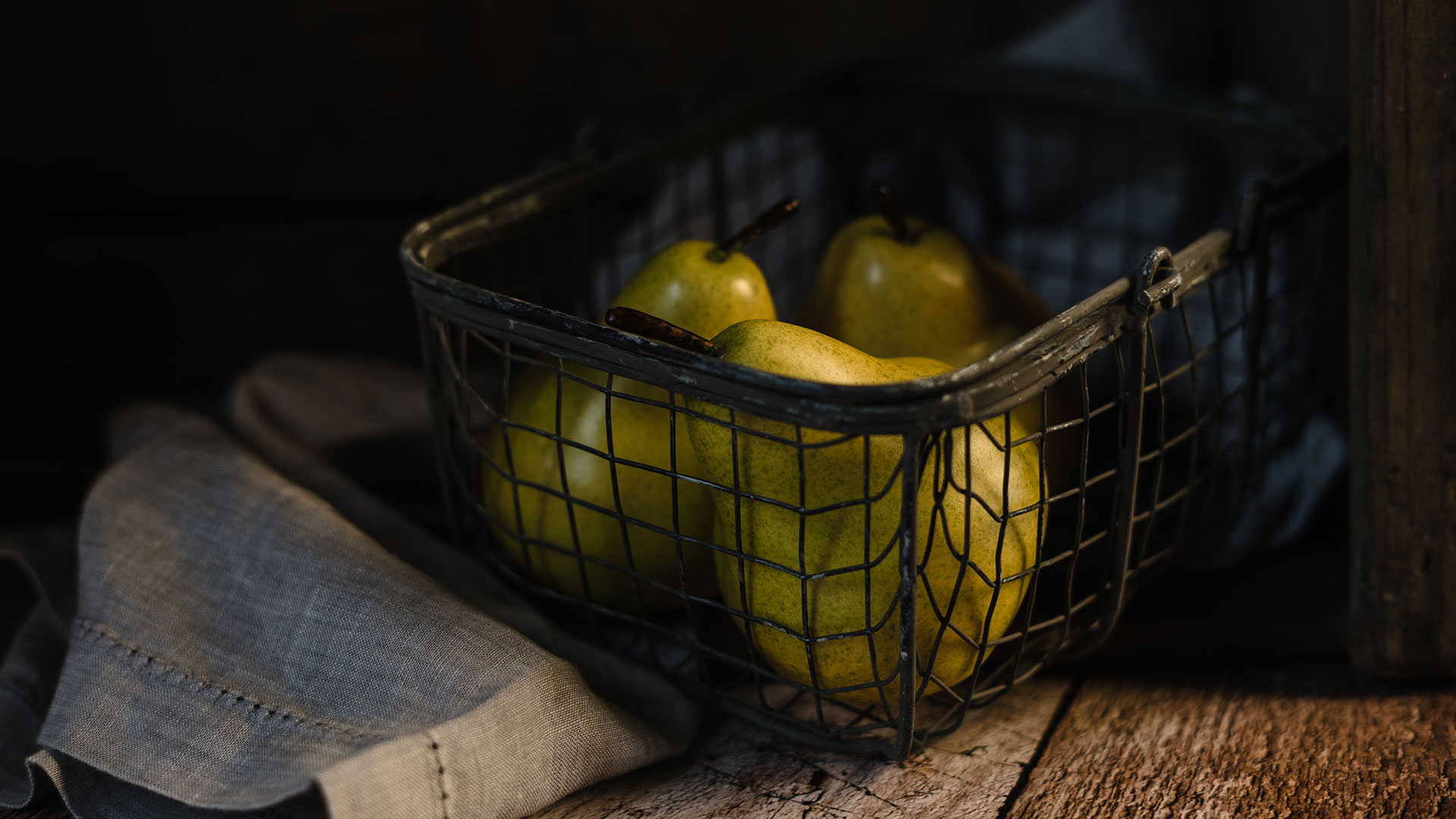This week I am going to explore MY signature style — dark and moody still-life photography. It was my first love with still life and to be honest … it still is. It is what I am known for and I usually end up teaching in my Workshops, as is requested so often.
So, let’s get a little dark and moody …
The essence of dark and moody is in the details, but also the deep shadows and saturated color. More often than not I tend to add a pop of red with some chocolate browns, but blues and yellows work well too. Consider your backdrops, props and accessories … dark, matte and textured will enhance the moody feel, consider dark wood furniture or painted canvas for a backdrop. I personally love a good rustic timber crate.
Choose the main subject (or hero) that’s perhaps lighter in color and tone and even slightly reflective … something that can stand out among the dark, or perhaps try a pop of color?
Think raw, rustic, weathered, worn, organic and dramatic when styling your scene. It does not have to be country or rustic — it could be clean and modern too.
Light
Light is always important, and I like to use a single-side light source. I usually place a table next to a window for some indirect sun and block/absorb the light around the scene using a black light blocker or dark fabric [see BTS image]. I like deep shadows and not too much direct light.
If you are still getting too much light you can use additional black foam core boards to block light down to a tiny slither.
Matte, organic textiles also absorb the light and enhance the shadows. Experiment with this. I think the magic happens when your subject seems to stand out from the background. You might find placing your setup just on the edge of the sidelight works really well. It’s all about experimenting.
Camera settings
If shooting with a DSLR try spot metering, your camera will see your scene as too dark and try to make everything lighter. You don’t want to lighten your scene, you want it dark. So you may need to underexpose your images to get the desired result, not too much, try one or two stops underexposed. You will need to set your camera to manual mode to achieve this. Set your ISO to 100, as you’ll most likely have your camera on a tripod anyway. Set your desired f-stop — for this kind of image I would say an f/4.5 to f/5.6 and then slightly underexpose your image.
How much you want to underexpose it is totally up to you. You can go so dark you can barely see the subject and just the edges and highlight (quite dramatic), or something a little lighter, but with flat light and deep shadows.
TIP: This is where shooting in RAW rather than JPEG, is preferable, as this allows room to rescue any areas that may have been over or underexposed in Lightroom or Photoshop (or similar).
Experiment in post-processing. Enhancing and deepening the shadows and reducing highlights. Play with saturation and vibrancy. Add contrast, make your shadows deep and any color pop!
The challenge …
As well as using a dark backdrop, experiment with crates, baskets, open cupboards, or the corner of a window in deep shade … place an interesting subject in your ‘space’ and make a little dark and moody magic. If you are feeling overwhelmed and this one can be tricky to get right, start simple, it is better to get a feel for this subject than overwhelm the subject matter. One single flower, cupcake, pear or apple is better to start with and can often be VERY effective.
All images were photographed using the Sony a7ii with 50mm prime lens, ISO 400, f/3.5, 1/100s.
Source link







Leave a Reply